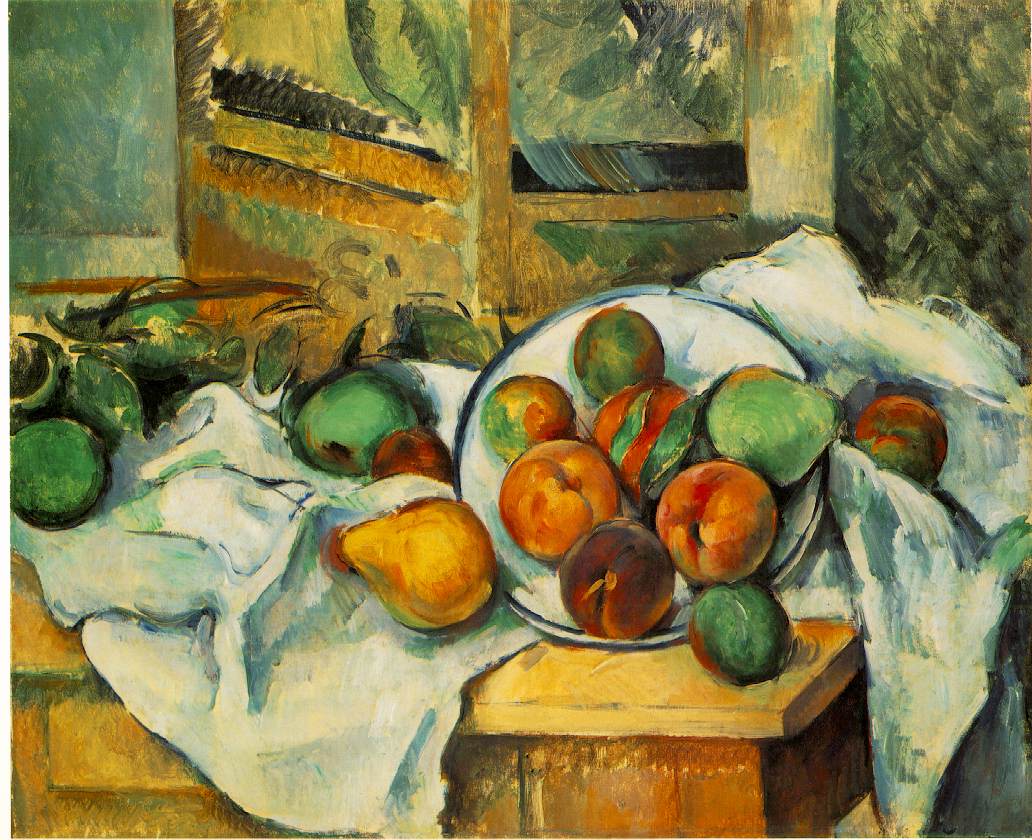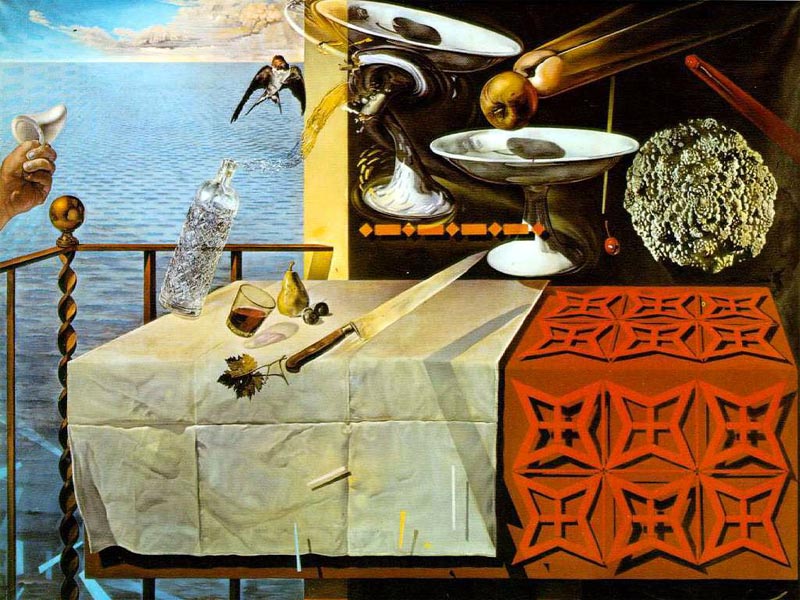Swiss still-life photographer, studied at Royal College of Arts
Brief History of Still Life
 Adriaen van Utrecht, Vanitas Still Life with Flowers and Skull, 1642. Oil on canvas, 67 x 86 cm.
Adriaen van Utrecht, Vanitas Still Life with Flowers and Skull, 1642. Oil on canvas, 67 x 86 cm.
- Flemish Vanitas Painting
- Always about meaninglessness of life, fragility of life
- Heavy Symbolism: skull, candle, rotten fruit to represent death, decay
- Most art at the time was religious, so these still lifes were new and interesting
- Fairly modern in terms of composition and lighting
 Paul Cezanne: Table, Napkin and Fruit (~1900)
Paul Cezanne: Table, Napkin and Fruit (~1900)
 Salvador Dali: Living Still Life (1956)
Salvador Dali: Living Still Life (1956)
object move around the space
 Erving Penn: Frozen Foods (1977)
Erving Penn: Frozen Foods (1977)
removes elements of reality (like table, tablecloth) from the still life focusses on the narrative frozen food, frozen to shape
archetypl vision of switzerland wanted to represent a forest, single trees on white background you can have a real object that doesn't match the reality you are trying to show
usa baltimore study, kids draw fish, some kids draw fish fingers for the kids that was more accurate representatio than an actual fish
commision for a book dealer arts and crafts house in norfolk images for a catalogue had to incorporate weird objects into catalogue photos, created narractives created a system to tell the story he wanted to tell backdrop light tried to create a story to match the story of the books
linked historic images of the place to contemporary ones, uses backdrop to block off certai parts
commision for the royal college of art 70 different objects for catalogue how do you ceate an interesting system group work by tutor integrated a print of the gallery space in rc into studio setup
Comission for London Borough of Waltham Forest
- Billbords
- Find objects, create relationship to local companies and people
- Marble had to be cut in different shapes
- Imperfections of the billboards add another dimension
Comission for Stockholm Culture House
- exhibition about skateboarding in the city
- pattern from famous place in stockhol
- uses comic book characters
Fashion magazine ongoing project interesting, strange way of showing brands in nre context chanel tennis ball cheap face creams are jealous of fancy chanel cream finds weird shit on ebay
royal college graduation project studied photography, didn't end up taking any photographs made fountains instead fairy liquid on chocolate fountains smell noise absolute representation of the goal of a photograph: being looked at
Questions
A lot of your pictures seem to require very elaborate physical setups. (Having pieces of marble cut to shape, complex lighting setups). Surely, a lot of this could be achieved a lot cheaper digitally. Why do you choose to not do that?
a big part of the work is that it is real there is a return to a reality of real objects shot on film medium format even if you dont see the effort, the fact that is real makes it more impactful human aspect, engage with real people, going around london or whereever finding stuff if ou do it digitally you loose contact obvious retouch is interesting, show process
obvious alterations in digital are an interesting thing to look at
Could you talk a bit more about how you use lighting to convey meaning in your photographs
the light is one of the most important tool to show an intention, you have to have an intention in your lighting that tells a narrative lighting surrounds the oobject to make them appear hyper real
lighting is difficult when you're not in the studio huge setup, multiple lights light up background, foreground, different layers of light some of them have 7 different light sources to create perfect reflections, can get quite technical
when you are building compositions, do you follow certain rules
composition, choice of objects main problem of the work secondary objects to surround the main subjects and create a narrative theres not really a system, but often a sense of humor things people can relate to (pop culture references)
Does the symbolism overpower the visual integrity
hopefull it doesnt. You often see geometric shapes and stuff, hopefull the actual meaning isn't sactrificed to create composition the pictures would say something else when they looked different, very precise message